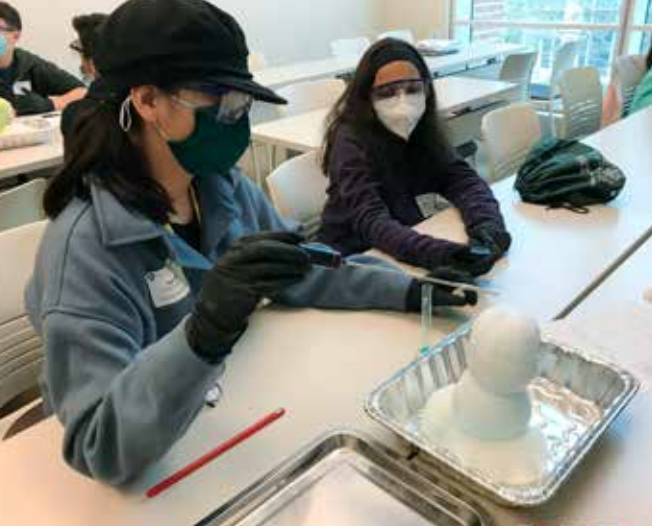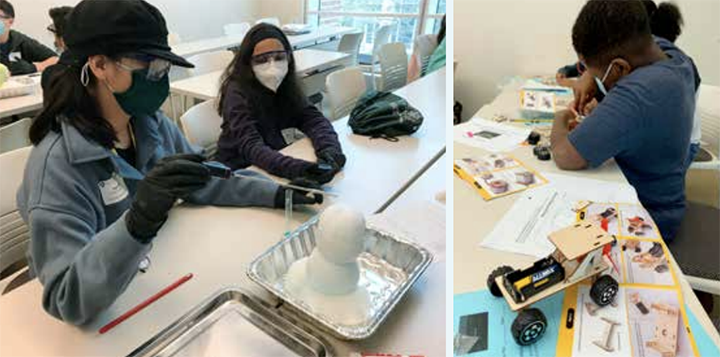More than 100 precollege students visited the Rice University campus Feb. 5 and 12 to attend the free nanoacademy workshops, an initiative organized by the Rice Office of STEM Engagement (R-STEM) and funded by the National Science Foundation.
Students explored innovative nanoscience and engineering with lessons developed by K–12 teachers who participated in Rice University’s Research Experiences for Teachers in Nanotechnology or NanoEnabled Water Treatment (NEWT) this past summer.
High school students learned about nanocrystals in the Grow and Glow session taught by Aerielle Rodriguez, a teacher at MacArthur High School in Aldine ISD, and the Cool Coatings taught by Mallam Phillips, a teacher at Hightower High School in Fort Bend ISD. These advanced topics did not intimidate these bright students, and they were happy to talk about their experiences. “I learned the band gaps that determine crystal conductivity,” said Obumneme Nwosu, a student at Bridgeland High School.
“I learned that the gap between metal in the periodic table varies depending on what family it is in. The interaction and hands-on activity were fun.”
Ana Rost, from Klein Oak High School, said, “I learned the different ways I can connect wires and chemicals to get something working. Everything was interesting and fun! Can’t wait to be an engineer.”
In the Murder at the Solar Powered Desalinization Plant workshop, students learned about water quality and aeroponics — growing plants without soil. The class was led by Mariana Quinn, a teacher at James E. Taylor High School in Katy ISD, and Julia Dolive, a teacher at Dulles Middle School in Fort Bend ISD.
“I learned to test phosphate, nitrate and pH levels,” said Nesibe Aykac, a student at Harmony School of Innovation.
“The most interesting thing was finding what seemed to look like microorganisms and seeing the color change in the water which contained different phosphate, nitrate and pH levels.”
Middle school students had fun learning about chemistry in the Gusty Winds and Foam session led by Robert Black, from Cleveland Middle School in Cleveland ISD and Donna Booker, from Forest Brook Middle School in HISD. Students investigated how three different catalysts changed the reaction temperature and height of the foam, also known as “elephant toothpaste” and explored how different variables influence weather.
In the Light Up Your Dyes workshop, fifth and sixth grade students explored engineering challenges with circuits and the function of bioluminescence in the session led by Ariel Delos Reyes from Morris Middle School in Pasadena ISD and Jessica Robicheaux of Post Elementary in Cypress Fairbanks ISD.
The program was led by R-STEM’s Christina Crawford, associate director for science and engineering, and Isaias Cerda, associate director for science education and English language learners for students from elementary, middle and high schools in the Houston area.
— Carolyn A. Nichol
Director
Rice Office of Stem Management


